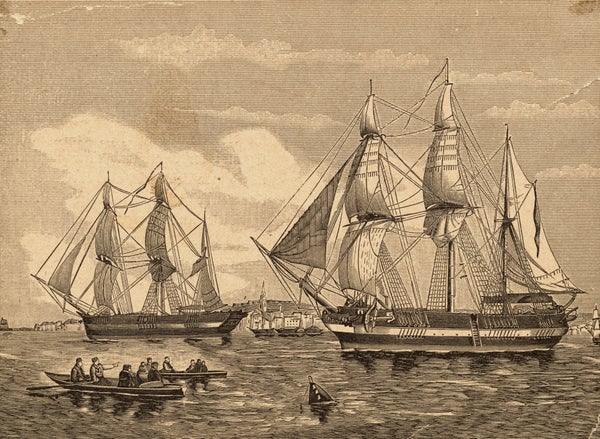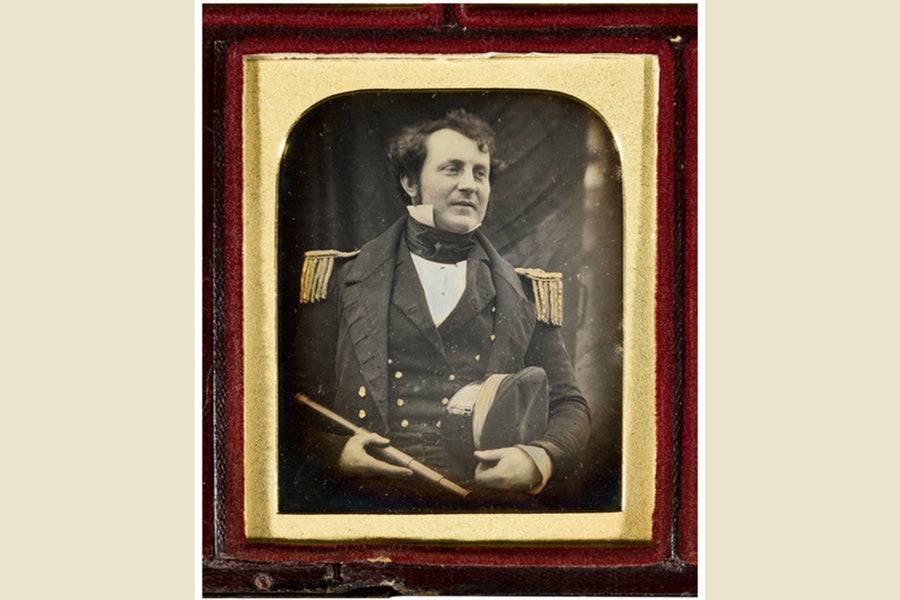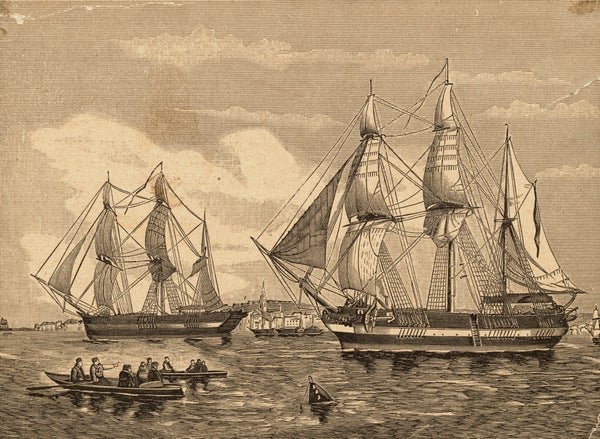October 7, 2024
3 min read
Cannibalized Captain of Doomed Arctic Expedition Identified by DNA Analysis
Scientists reveal the identity of a cannibalized captain from the doomed Northwest Passage expedition of 1845 to 1848

HMS Erebus and HMS Terror, the two ships used by Sir John Franklin on his 1845 ill-fated search for the Northwest Passage, are shown in this engraving. The ships became trapped in ice at King William Sound (Victoria Strait) for three years, leading to the deaths of all 135 men.
A new DNA analysis has identified the remains of Captain James Fitzjames, a Royal Navy officer who disappeared on a doomed Northwest Passage expedition in Canada more than 175 years ago.
Fitzjames was part of an expedition led by Sir John Franklin that set out in 1845 from England with 129 men on two ships: HMS Erebus and HMS Terror. The expedition aimed to navigate the Northwest Passage, an Arctic ship route that links the Atlantic with the Pacific. But both ships became trapped in ice, and the entire crew died.
Fitzjames became the commander of HMS Erebus once Franklin died, but his ship became trapped at King William Island. Skeletal remains of many sailors have been discovered at various locations on the island in the 19th century, but Fitzjames is only the second individual from there to be identified. In a new study, a team of Canadian scientists have isolated the DNA from a tooth attached to a jawbone, which was found in a heap of approximately 400 human bones and teeth, and matched it to a living relative.
On supporting science journalism
If you’re enjoying this article, consider supporting our award-winning journalism by subscribing. By purchasing a subscription you are helping to ensure the future of impactful stories about the discoveries and ideas shaping our world today.
The study’s first author, Douglas Stenton, an archaeologist at the University of Waterloo in Canada, and his colleagues extracted DNA from a molar found in 1993. They also collected DNA samples of 25 living descendants of the Franklin expedition’s crew. The Y chromosome profiles of the tooth matched one of the living relatives, who was the second cousin of Fitzjames five times removed. Both “cousins” shared a paternal ancestor — Fitzjames’ great-grandfather.
Researchers already knew that this individual, now identified as Fitzjames, was likely cannibalized. In an earlier analysis, bioarchaeologist Anne Keenleyside (who died in 2022) found cut marks on many of the recovered remains, including the newly analyzed jawbone. This indicates that the survivors ate parts of Fitzjames’ body (and those of other sailors) in an attempt to stave off starvation, the authors of the new study said.
Related: Explorers retrace 1845 Arctic expedition that ended in death and cannibalism
The discovery also makes Fitzjames the first identified cannibalism victim among the expedition’s members. “It is possible that he was one of the first to die” at King William Island, the authors wrote in the study, published Sept. 24 in the Journal of Archaeological Science: Reports.

Daguerreotype of James Fitzjames, taken by Richard Beard in May 1845.
Photo courtesy of Sotheby’s
Part of the expedition’s history is known thanks to Fitzjames, who left an ominous note in a stone cairn at Victory Point on King William Island. The note documented the death of several crew members, including Franklin, and the survivors’ decision to abandon the ship and travel by foot to Back River in Nunavut, the northernmost Canadian territory.
But all of them perished before reaching it. Later, guided by Inuit, search parties discovered skeletal remains of the sailors at various locations on King William Island. The AMC TV series “The Terror” was a horror dramatization of this expedition.
This is just the second member of the Franklin expedition to have been identified. In 2021, Stenton and his team identified the remains of John Gregory, chief engineer of HMS Erebus, from DNA extracted from his skull.
The findings about the expedition’s cannibalism support the oral accounts of the Inuit, who had led searchers to the skeletal remains of the expedition members. The Inuit had seen 40 men hauling a ship’s boat on a sledge and, the following year, discovered many corpses near the mouth of the Back River, some of which showed signs of cannibalism.
Copyright 2024 Live Science, a Future company. All rights reserved. This material may not be published, broadcast, rewritten or redistributed.








